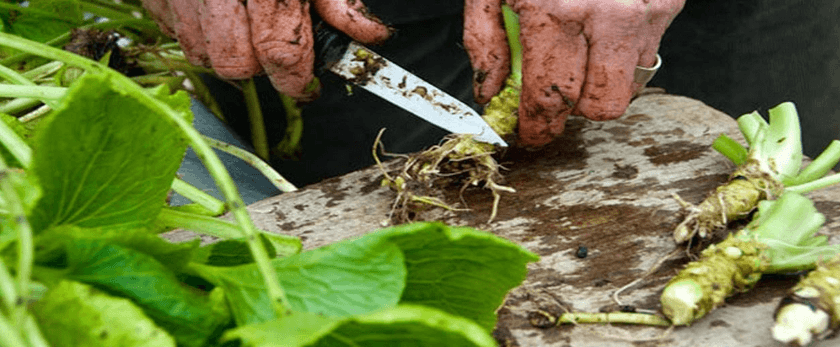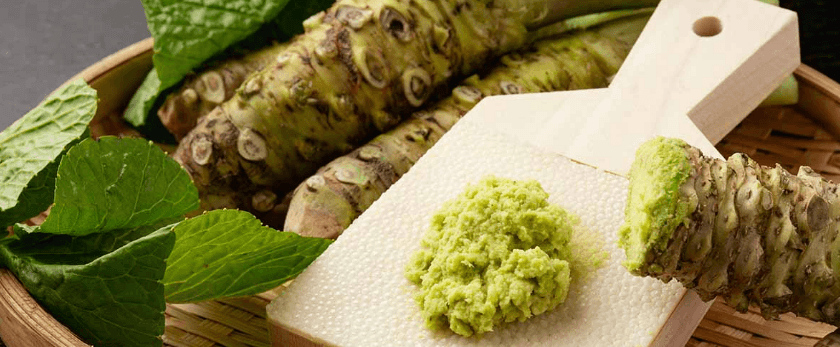Are you a fan of the spicy and flavorful Japanese condiment, wasabi? Did you know that you can actually grow your own wasabi at home? Not only is it a fun and rewarding gardening project, but it also promotes sustainability and reduces your carbon footprint. In this article, we will guide you through the process of growing your own wasabi, from caring for the plant to common problems and the best time to grow. Let's get started!
How to Care for Wasabi
Wasabi is a member of the Brassicaceae family, which includes other popular vegetables like broccoli and cabbage. It is a perennial plant that thrives in cool and moist conditions, making it a perfect addition to your garden if you live in a temperate climate. Here are some key points to keep in mind when caring for your wasabi plant:
Watering
Wasabi plants require consistent moisture, but not too much. The soil should be kept consistently moist, but not waterlogged. Overwatering can lead to root rot and other diseases. On the other hand, underwatering can cause the leaves to wilt and the plant to become stressed. It is best to water your wasabi plant in the morning, allowing the excess water to drain out before the sun sets.
Light
Wasabi plants prefer partial shade, as direct sunlight can cause the leaves to wilt and the plant to become stressed. If you are growing your wasabi indoors, place it near a window that receives indirect sunlight. If you are growing it outdoors, choose a spot that receives morning sun and afternoon shade.
Soil
Wasabi plants thrive in rich, well-draining soil. The ideal pH level for wasabi is between 6.0 and 7.0. You can use a soil testing kit to determine the pH level of your soil and make necessary adjustments. If your soil is too acidic, you can add lime to raise the pH level. If it is too alkaline, you can add sulfur to lower the pH level.
Fertilizer
Wasabi plants are heavy feeders and require regular fertilization. You can use a balanced organic fertilizer every two weeks during the growing season. Avoid using chemical fertilizers, as they can harm the delicate roots of the wasabi plant.
Pruning
Pruning is an essential part of caring for your wasabi plant. It helps to promote healthy growth and prevents the plant from becoming too leggy. You can prune your wasabi plant by removing any yellow or damaged leaves, as well as any suckers that may appear. It is best to prune your plant in the morning when the leaves are turgid.

What is the Best Time to Grow Wasabi?
The best time to grow wasabi is during the cooler months, from late fall to early spring. This is because wasabi plants thrive in cool and moist conditions. If you live in a warmer climate, you can still grow wasabi, but you may need to provide extra shade and moisture to keep the plant healthy.
Common Problems with Wasabi
Like any plant, wasabi can face some common problems. Here are a few issues you may encounter and how to address them:
- Root rot: This is caused by overwatering and can be prevented by ensuring proper drainage and not overwatering your plant.
- Leaf wilt: This can be caused by underwatering or too much direct sunlight. Make sure to water your plant regularly and provide it with partial shade.
- Pests: Wasabi plants are susceptible to pests like aphids and slugs. You can use organic pest control methods, such as neem oil or diatomaceous earth, to keep these pests at bay.
Conclusion
Growing your own wasabi is not only a fun and rewarding gardening project, but it also promotes sustainability and reduces your carbon footprint. By following the care tips mentioned in this article, you can successfully grow your own wasabi at home. Remember to water your plant regularly, provide it with partial shade, use well-draining soil, fertilize it regularly, and prune it to promote healthy growth. With a little bit of patience and care, you can enjoy your own homegrown wasabi and add a touch of sustainability to your lifestyle.










